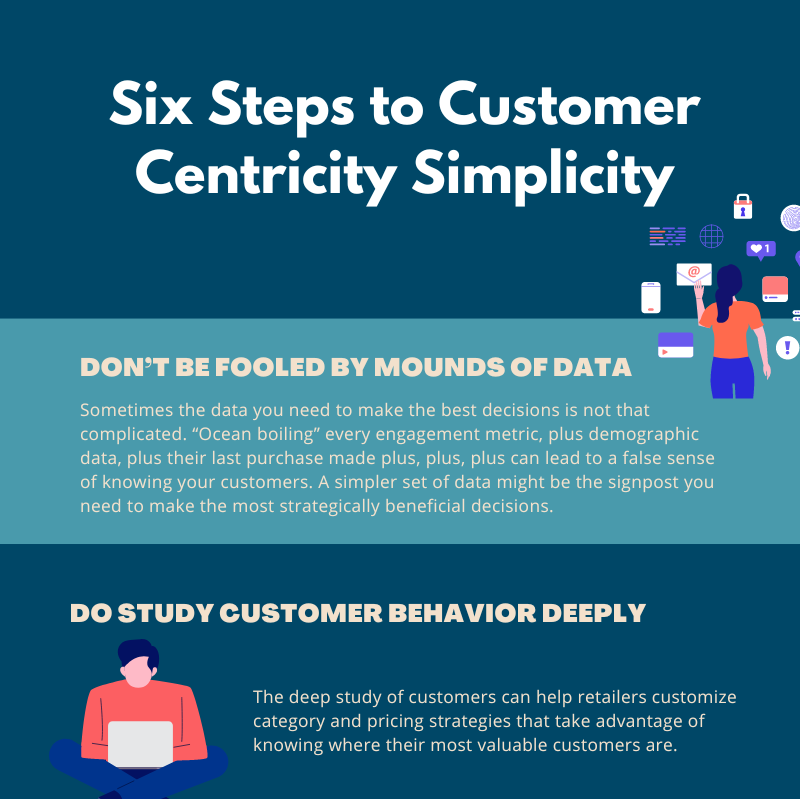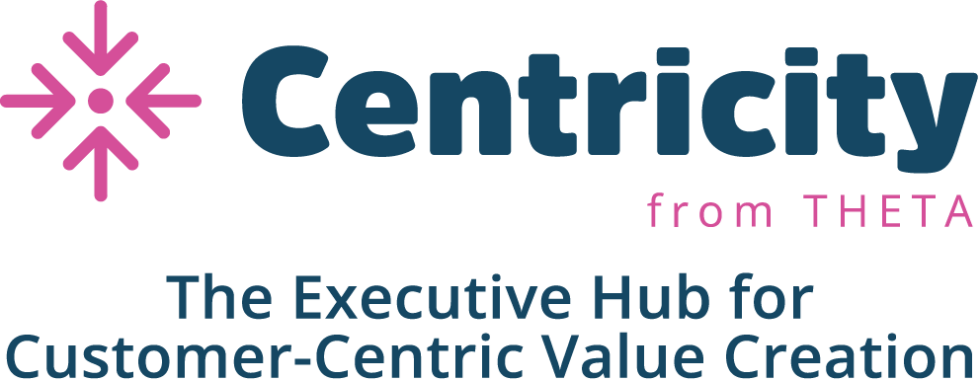The Simplicity in Customer Centricity
The Simplicity in Customer Centricity: Retailers Can Spur Growth Through Customer Value Fundamentals
Written by Tara Heptinstall with Pete Fader | August 2022
It’s August 2022 and there is no doubt the pressure is on for businesses in the U.S. Post-pandemic sector makeovers are happening before us like a reality show that will, undoubtedly, have a surprise ending. One sector that is certainly going through a post-COVID metamorphosis is retail, with several well-known brands taking extreme steps to stay in play. But with a clear focus on the fundamentals of customer value and a long-term strategy, retail businesses (or any business frankly) can weather these market pressures.
Theta Co-founder Peter Fader, widely recognized expert in the area of Customer Lifetime Value (CLV) and Customer-Based Corporate Valuation® (CBCV), had a few observations about the retail industry when asked about what was happening in the market lately.
“In general, retailers really have not coped with COVID very well,” Fader said. “They were too busy constructing elaborate band-aids, rather than developing enduring solutions to keep them on track for sustainable long-run growth. Most retailers weathered the storm, but we need to look more carefully at the ‘COVID peaks’ or ‘COVID troughs’ to really understand what was happening with customer buying patterns. Few have done that rigorously. So retailers placed a lot of big bets on point-in-time technology needs that are not likely to offer much in the way of long-term payoffs.”
According to a recent Perspectives piece by Deloitte, “Those retailers with strong platforms and sophisticated data analysis have succeeded in connecting with consumers and offering them additional services and value.”
It’s important, however, to dig in a little deeper on the ‘sophisticated data analysis’ part of that statement. Sophisticated does not necessarily have to mean “more complicated.” For instance, focusing on granular data (but sometimes an even simpler set of data than you think) can be used to pinpoint specific customers who are driving the most value for the business. Many companies get sidelined by trying to understand a plethora of engagement metrics (e.g., downloads, clicks, etc.) that only tell a small part of the customer behavior story. And they don’t tell us anything about the customers’ lifetime value.
The Simplest Path to Growth
There are interesting opportunities for retail if leaders can pause briefly from the seemingly complex plate-full of tactical distractions, and get back to customer value fundamentals that re-acquaint them with their very best customers. Retailers are in a really good, and unique, position compared to other types of businesses to truly understand their customers at a deep level and make better strategic decisions.
“It really does not have to be that complicated to give retail executives or private equity firms with a retail portfolio the kind of insight they need to get an understanding of the value their customers will bring,” said Fader. “Our view is, not surprisingly, if companies utilized a proper customer-level CBCV-type view of the business, they would absolutely set themselves apart.”
Avoid the Swirl
Here is a little evidence of the forest-for-the-trees swirl in which retailers continue to get caught. Topics like “hybrid retail,” influencer marketing, “hyper personalization,” sustainability, NFTs, omnichannel marketing, affiliate marketing, and (wait for it) Launching Your Brand into the Metaverse were all on the agenda at the Boston-based eTail: The eCommerce & Omnichannel Conference earlier this month.
But the agenda had a major gap.
There wasn’t one session that covered the critical and rather straightforward study of customer behavior to help drive rigor in planning the most effective tactical mix. It was mostly an agenda of “shiny object” topics.
The retail sector keeps ignoring the most simple and fundamental asset in their competitive arsenal. Analysis of customers at the transactional and behavioral levels has proven time and again to shine a light on opportunities for growth.
Imagine the laser focus you could apply as a marketer or business strategist if you knew exactly which customers (not at an aggregate level, but at the individual level) were your besties, your go-tos, your loyal purchasers. The tactical efforts in typical acquisition, retention and product development programs could, theoretically, be super simple and possibly less costly.
“Think Occam’s Razor,” Fader said matter-of-factly.
Imagine the laser focus you could apply as a marketer or business strategist if you knew exactly which customers (not at an aggregate level, but at the individual level) were your besties, your go-tos, your loyal purchasers. The tactical efforts in typical acquisition, retention and product development programs could, theoretically, be super simple and possibly less costly.
Take a Long-term View and Forget the Black Friday Strategy
As a related example, Fader has long cautioned against putting all of the proverbial profit-making eggs in the Black Friday basket. He says strategies like Black Friday typically reward the worst customers and rarely offer unique or creative programs targeted to the best customer.
“Some kind of small Black Friday campaign is fine,” Fader offered. “But don’t spin up deep discounts to try and outdo your competitors. It’s not some mystical way to suddenly find valuable customers or to turn so-so customers into valuable ones. Focus more on relationship-enhancing activities to maximize the value of your best customers – all year long.”
The takeaway here (if you’re paying attention) is that retail leaders and strategists should not miss the opportunity to maximize the experience for the high-value customer. Learning who they are, and recognizing the heterogeneity of your overall customer base is the first step toward simplicity in your acquisition and retention efforts. Look at individual customers to see what they normally do, what they’ve done throughout any market changes, and which ones have consistently bought – predicting what they’ll do in the future.
Those retailers that are doing smart things to understand their best customers are applying that insight in unique and different ways – for example product development, store layout, and locations. It’s not just about personalized communications.
“Develop original thoughts that support deepening your relationship with customers,” said Fader. “It has to start at the top for companies to evolve to a point that they are not so reliant on Black Friday to meet the annual sales numbers.”
The bottom line: retailers should think more broadly, long-term and creatively across the whole year for how to maximize relationships with and sales to their best customers. Don’t just track sales numbers. Find out what the top 20% of your customers are doing to drive those sales.
Related: See Theta’s recent CBCV analysis on US online glasses retailer Warby Parker
Dos and Don’ts: The Six-Step Wrap-Up
After all that opining, here’s a quick summary of recommendations to guide retailers in using simplicity and customer centricity to inform broader decisions and gain a competitive advantage:
- Don’t be fooled by mounds of data. Sometimes the data you need to make the best decisions is not that complicated. “Ocean boiling” every engagement metric, plus demographic data, plus their last purchase made plus, plus, plus can lead to a false sense of knowing your customers. A simpler set of data might be the signpost you need to make the most strategically beneficial decisions.
- Do study your customers’ behavior deeply. The deep study of customers can help retailers customize category and pricing strategies that take advantage of knowing where their most valuable customers are.
- Don’t treat all customers the same with run-of-the-mill discount programs. Understand the heterogeneity of your customers. Developing strategies that respond to these differences and their different buying patterns is ‘smart targeting.’ It’s not, “what deep discounts should we run to get rid of stuff.” It should be “what kinds of customers should we be focusing on.” Do you know specifically who your top 20% of customers are and what they are doing transactionally with your business?
- Do define what your best customers look like to find more like them. Once you understand the profile of your best customers, using transaction-level analysis, you can go fishing for more just like them. Focus on what acquisition characteristics tend to set them apart.
- Do take a long-term view. Don’t go nuts with topsy turvy programs that are band aids in a short-term crisis. Stay focused on long-term strategic programs that maximize your knowledge of your best customers. If the pandemic taught us anything in the world of commerce, it’s that humans will find a way to get the things they need or want. They might make short-term, crisis-driven adjustments to HOW they get their needs met, but ultimately, when things settle down, they will likely go back to tried and true patterns, accessing the products and brands they trust.
- Do use customer value and their transactional behavior to design stronger retention campaigns. Target your marketing programs armed with this deep understanding of who is truly driving the profitability in your business. And don’t go crazy with outsized and costly acquisition programs. Take a surgical approach to put your precious dollars where your most precious customers are.

